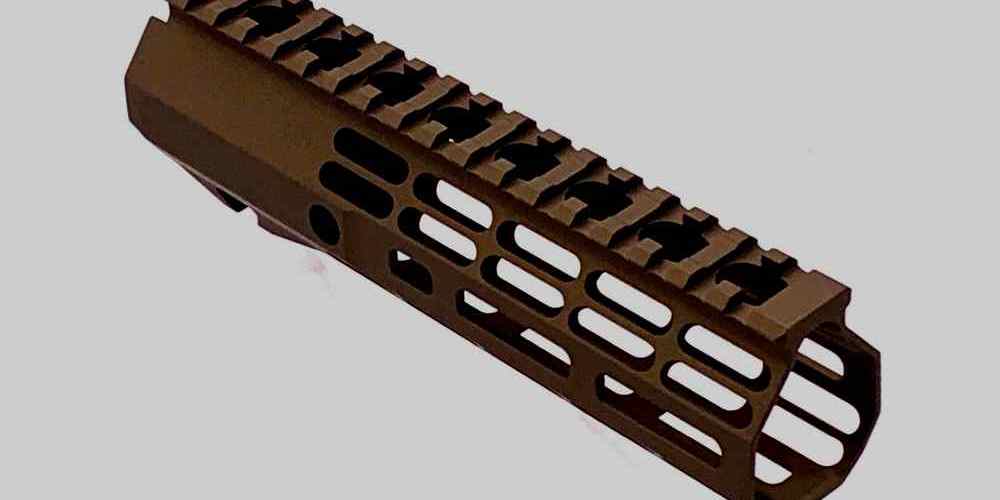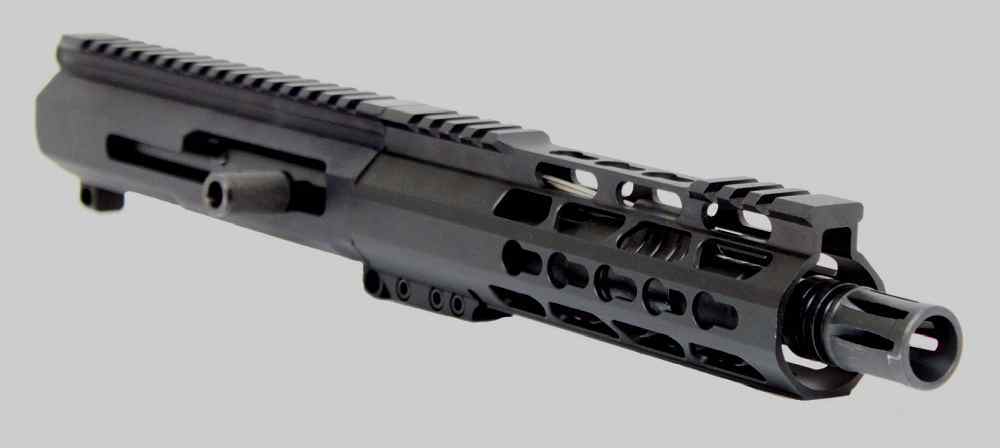Secure your upper receiver with confidence and ease.
Proper Storage Solutions for Upper Receivers
As an AR15 owner, it’s important to properly store and transport your upper receiver to ensure its longevity and performance. The upper receiver is a critical component of your rifle, housing the bolt carrier group, barrel, and handguard. Proper storage and transport practices can help prevent damage and maintain the accuracy and reliability of your firearm.
When it comes to storing your upper receiver, there are a few key considerations to keep in mind. First and foremost, you’ll want to make sure that your upper receiver is clean and free of any debris or moisture before storing it. This will help prevent corrosion and ensure that your rifle functions properly when you’re ready to use it.
One of the best ways to store your upper receiver is in a dedicated rifle case or gun safe. These storage solutions provide protection from dust, moisture, and other environmental factors that can damage your rifle over time. Make sure to store your upper receiver in a secure location where it won’t be knocked around or damaged.
If you’re transporting your upper receiver, whether to the range or on a hunting trip, it’s important to take extra precautions to ensure its safety. One of the best ways to transport your upper receiver is in a padded rifle case or bag. These cases provide protection from bumps and jostling during transport, helping to prevent damage to your rifle.
When transporting your upper receiver, make sure to secure it properly in your vehicle to prevent it from shifting or falling during transit. You may also want to consider using a trigger lock or cable lock to prevent unauthorized access to your firearm while it’s being transported.
If you’re flying with your upper receiver, it’s important to check with the airline for their specific guidelines on transporting firearms. In most cases, you’ll need to declare your firearm at check-in and follow specific procedures for packing and securing your rifle for transport.
Proper storage and transport of your upper receiver are essential for maintaining the performance and longevity of your AR15. By following these best practices, you can ensure that your rifle is always ready for action when you need it.
In conclusion, proper storage and transport of your upper receiver are essential for maintaining the accuracy and reliability of your AR15. By following these best practices, you can protect your investment and ensure that your rifle functions properly for years to come. Whether you’re storing your upper receiver at home or transporting it to the range, taking the time to properly care for your firearm will pay off in the long run.

Tips for Safely Transporting AR15 Upper Receivers
As an AR15 owner, it’s important to understand the best practices for storing and transporting your upper receiver. The upper receiver is a critical component of your rifle, housing the barrel, bolt carrier group, and other key parts. Proper storage and transport can help ensure the longevity and performance of your AR15.
When it comes to storing your upper receiver, the first step is to ensure it is clean and properly lubricated. This will help prevent corrosion and ensure smooth operation when you are ready to use it. It’s also a good idea to store your upper receiver in a cool, dry place away from moisture and extreme temperatures. This will help prevent rust and other damage that can occur over time.
If you need to transport your upper receiver, there are a few key tips to keep in mind. First, always make sure your upper receiver is unloaded before transporting it. This is not only a safety precaution but also a legal requirement in many states. You should also consider investing in a quality rifle case or bag to protect your upper receiver during transport. Look for a case that is padded and has compartments to keep your upper receiver secure and organized.
When transporting your upper receiver, it’s important to handle it with care. Avoid dropping or banging your upper receiver, as this can cause damage to the delicate components inside. If you are transporting your upper receiver in a vehicle, make sure it is securely stored and not bouncing around. This will help prevent damage and ensure your upper receiver arrives at its destination in good condition.
Another important tip for safely transporting your upper receiver is to always follow local laws and regulations. Some states have strict laws regarding the transportation of firearms, so make sure you are familiar with the rules in your area. This may include requirements for storing your upper receiver in a locked case or keeping it separate from the lower receiver.
In addition to following these tips, it’s also a good idea to regularly inspect your upper receiver for any signs of wear or damage. This can help you catch any issues early and prevent them from becoming more serious. If you notice any problems with your upper receiver, it’s best to have it inspected by a qualified gunsmith.
By following these best practices for storing and transporting your AR15 upper receiver, you can help ensure the safety and performance of your rifle. Proper storage and transport are key to maintaining the longevity of your upper receiver and preventing damage that can affect its function. With a little care and attention, you can enjoy your AR15 for years to come.
Importance of Regular Maintenance for Upper Receivers
As an AR15 owner, it is important to understand the significance of regular maintenance for your upper receiver. The upper receiver is a critical component of your firearm, housing the bolt carrier group, barrel, and other essential parts. Neglecting proper maintenance can lead to malfunctions, decreased accuracy, and even safety hazards. By following best practices for storage and transport, you can ensure the longevity and performance of your AR15.
One of the most important aspects of upper receiver maintenance is cleaning. After each use, it is crucial to thoroughly clean and lubricate your upper receiver to prevent buildup of carbon, dirt, and debris. This not only helps to maintain the functionality of your firearm but also extends its lifespan. Regular cleaning also allows you to inspect for any signs of wear or damage that may require attention.
In addition to cleaning, proper storage is key to preserving the condition of your upper receiver. When not in use, your AR15 should be stored in a secure and dry location, away from extreme temperatures and humidity. Investing in a quality gun safe or case can help protect your firearm from dust, moisture, and other environmental factors that can cause damage over time.
When transporting your AR15, it is important to handle it with care to prevent any accidental damage. Always ensure that your firearm is unloaded and properly secured in a case or bag designed for firearms. This not only protects your upper receiver from scratches and dings but also helps to prevent any accidental discharges during transport.
Regular inspection of your upper receiver is also crucial for identifying any potential issues before they escalate. Check for loose or damaged parts, signs of corrosion, and any abnormal wear patterns. Addressing these issues promptly can prevent malfunctions and ensure the safety and reliability of your AR15.
In addition to regular maintenance, it is important to follow manufacturer recommendations for replacement parts and upgrades. Over time, certain components of your upper receiver may wear out and need to be replaced. Upgrading to high-quality parts can improve the performance and reliability of your firearm, ensuring that it functions optimally when you need it most.
By following these best practices for upper receiver storage and transport, you can maintain the condition and performance of your AR15 for years to come. Regular maintenance, proper storage, and careful handling are essential for ensuring the safety and reliability of your firearm. Remember, a well-maintained upper receiver is a key factor in the overall functionality of your AR15. So take the time to care for your firearm, and it will serve you well for many years to come.
Secure Storage Options to Prevent Damage or Theft
As an AR15 owner, it is essential to prioritize the secure storage and transport of your upper receiver to prevent damage or theft. The upper receiver is a critical component of your firearm, housing the barrel, bolt carrier group, and other key parts. Proper storage and transport practices will not only protect your investment but also ensure the safety of those around you.
One of the best ways to secure your upper receiver is to invest in a quality gun safe or lockable storage case. Gun safes come in various sizes and configurations, allowing you to choose one that fits your specific needs. Look for a safe that is made of durable materials and features a secure locking mechanism to prevent unauthorized access.
If you prefer a more portable option, consider a lockable storage case designed specifically for AR15 rifles. These cases are typically made of hard plastic or metal and feature foam padding to protect your upper receiver from bumps and scratches during transport. Look for a case with reinforced hinges and latches for added security.
When storing your upper receiver in a gun safe or storage case, be sure to remove any ammunition and store it separately. This will prevent accidental discharge and ensure the safety of those in your home. Additionally, consider investing in a dehumidifier or moisture-absorbing packets to prevent rust and corrosion on your upper receiver.
If you need to transport your AR15, whether to the range or for hunting purposes, it is crucial to do so safely and securely. Always transport your upper receiver in a locked case or gun bag to prevent damage and deter theft. If you are traveling by car, be sure to secure the case in the trunk or another out-of-sight location to avoid drawing unwanted attention.
When transporting your upper receiver, be mindful of local laws and regulations regarding firearms. Some states have strict guidelines for transporting firearms, including requirements for locking cases and ammunition storage. Familiarize yourself with these laws to avoid any legal issues while traveling with your AR15.
In addition to secure storage and transport options, consider investing in accessories that can help protect your upper receiver. A quality gun sock or silicone cloth can help prevent scratches and corrosion, while a barrel cover can protect the muzzle from damage during transport. These small investments can go a long way in preserving the longevity and performance of your AR15.
By following these best practices for upper receiver storage and transport, you can ensure the safety and security of your firearm while also protecting your investment. Remember to always prioritize safety and responsibility when handling firearms, and never hesitate to seek guidance from a professional if you have any questions or concerns. With proper care and attention, your AR15 upper receiver will continue to serve you well for years to come.
How to Properly Clean and Lubricate Upper Receivers
As an AR15 owner, it’s important to properly clean and lubricate your upper receiver to ensure optimal performance and longevity of your firearm. Neglecting this crucial maintenance can lead to malfunctions, decreased accuracy, and even potential safety hazards. In this article, we will discuss the best practices for cleaning and lubricating your AR15 upper receiver.
Before you begin cleaning your upper receiver, it’s important to ensure that your firearm is unloaded and the magazine is removed. Safety should always be your top priority when handling firearms. Once you have verified that your AR15 is safe to work on, you can start the cleaning process.
Start by disassembling your upper receiver according to the manufacturer’s instructions. This typically involves removing the charging handle, bolt carrier group, and any other components that are easily removable. Once you have disassembled the upper receiver, you can begin cleaning the individual parts.
Using a solvent and a cleaning brush, scrub the inside of the upper receiver to remove any carbon buildup, dirt, and debris. Pay close attention to the chamber and bore, as these areas can accumulate fouling that can affect the performance of your firearm. Once you have thoroughly cleaned the upper receiver, wipe it down with a clean cloth to remove any excess solvent.
Next, you will want to clean the bolt carrier group. This is a critical component of your AR15 that can become dirty and gummed up with use. Use a solvent and a brush to scrub the bolt carrier group, paying special attention to the bolt face, gas rings, and firing pin. Once you have cleaned the bolt carrier group, wipe it down with a clean cloth and apply a light coat of lubricant to prevent corrosion and ensure smooth operation.
After cleaning the individual components, reassemble your upper receiver according to the manufacturer’s instructions. Make sure that all parts are properly aligned and secured to prevent any malfunctions when firing your AR15. Once you have reassembled the upper receiver, it’s time to lubricate it for optimal performance.
Using a high-quality gun oil or lubricant, apply a light coat to the inside of the upper receiver, as well as to the bolt carrier group and other moving parts. Be sure to use a lubricant that is specifically designed for firearms, as using the wrong type of oil can cause malfunctions and damage to your AR15.
After lubricating your upper receiver, cycle the bolt carrier group a few times to ensure that the lubricant is evenly distributed and that all moving parts are properly coated. This will help prevent wear and tear on your firearm and ensure smooth operation when firing.
In conclusion, proper cleaning and lubrication of your AR15 upper receiver is essential for maintaining the performance and longevity of your firearm. By following these best practices, you can ensure that your AR15 functions reliably and safely every time you use it. Remember to always prioritize safety when handling firearms and to consult your owner’s manual for specific instructions on cleaning and maintenance.






